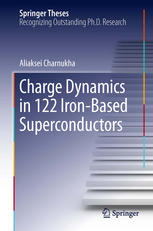

Most ebook files are in PDF format, so you can easily read them using various software such as Foxit Reader or directly on the Google Chrome browser.
Some ebook files are released by publishers in other formats such as .awz, .mobi, .epub, .fb2, etc. You may need to install specific software to read these formats on mobile/PC, such as Calibre.
Please read the tutorial at this link: https://ebookbell.com/faq
We offer FREE conversion to the popular formats you request; however, this may take some time. Therefore, right after payment, please email us, and we will try to provide the service as quickly as possible.
For some exceptional file formats or broken links (if any), please refrain from opening any disputes. Instead, email us first, and we will try to assist within a maximum of 6 hours.
EbookBell Team

4.8
24 reviewsThis thesis combines highly accurate optical spectroscopy data on the recently discovered iron-based high-temperature superconductors with an incisive theoretical analysis. Three outstanding results are reported: (1) The superconductivity-induced modification of the far-infrared conductivity of an iron arsenide with minimal chemical disorder is quantitatively described by means of a strong-coupling theory for spin fluctuation mediated Cooper pairing. The formalism developed in this thesis also describes prior spectroscopic data on more disordered compounds. (2) The same materials exhibit a sharp superconductivity-induced anomaly for photon energies around 2.5 eV, two orders of magnitude larger than the superconducting energy gap. The author provides a qualitative interpretation of this unprecedented observation, which is based on the multiband nature of the superconducting state. (3) The thesis also develops a comprehensive description of a superconducting, yet optically transparent iron chalcogenide compound. The author shows that this highly unusual behavior can be explained as a result of the nanoscopic coexistence of insulating and superconducting phases, and he uses a combination of two complementary experimental methods - scanning near-field optical microscopy and low-energy muon spin rotation - to directly image the phase coexistence and quantitatively determine the phase composition. These data have important implications for the interpretation of data from other experimental probes.